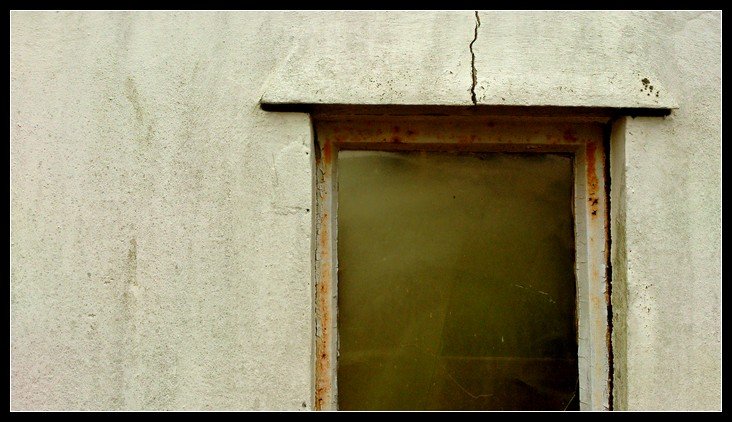
Cracks in the building do cause worries in the mind of the user, and as such separation cracks are the failure of structure which may be major or minor. The appearance of the cracks are an unavoidable problem in buildings, and for the common man, it’s hard to understand the cause of such cracks. The team of professionals are trying to eliminate the cause of cracks in house, but due to the certain limitations, they remain unavoidable in the building.
Here we have tried to evaluate cause, prevention, and cure of separation cracks by identifying the nature, width, shape, occurrence place and type of cracks. Let’s have a look on the general causes, preventions and repairs of separation cracks between masonry wall and door frame joints.

The Cause of Separation Cracks between Masonry Wall and Door Frame Joints:
- Basically such separation cracks occur due to the different co-efficient of thermal expansion of wood and masonry wall i.e. brick/ block masonry. A gap occurs between them as expansion and contraction of both is different during change in temperature, which we identify as cracks.
In tropical countries like India, the difference in maximum and minimum temperature during the day & night is normally 200 C. Cracks are normally visible in half brick wall (115 mm) and not in 230 mm thick brick wall as in partition wall, they flush with the wooden frame.
- Mortar Joint between masonry walls and door frame is not filled up properly and hence a gap remains as it is. This ultimately appears as separation cracks.
- Due to shrinkage, cracks also appear at joints. The expansion and contraction occurs because, when the quality of the wood is not good. Generally wood has a tendency to change volume due to change in moisture content.
- The decay of wooden door frame due to the chemical reaction. It also develops cracks at joints.
- In rainy season, wooden door frames or shutters absorb the moisture from air and swell, and the doors refuse to shut properly. Hence force is required for operating of the door. Such force slowly leads to the development of separation cracks at joints.
- Due to the heavy wind sometimes, the door shutter forcefully strikes the frame, and due to the impact of such forceful strikes, the cracks develop at joints.
- Due to poor workmanship during the time of frame fixing in brickwork, if holdfasts are not embedded properly in the masonry wall, it will lead in separation cracks in long term.
- Construction of full height masonry wall in a day time also results in Crack between masonry wall and door frame joints.
- False construction practice also develops cracks. i.e. constructing a wall more than 1m a day.
You need to always adhere to the rule of not constructing wall more than 1m a day.
Prevention of Cracks between Masonry Wall and Door Frame Joints:
- Good quality materials like seasoned teak wood, cement, aggregate, bricks should be selected. It will minimise the occurrence of separation cracks between masonry wall and door frame joints as the physical property of materials (related moisture and thermal movement) also play a major role in the development of cracks. Low-quality wood should not be used.
- Shrinkage cracks should be minimised by avoiding the use of rich cement mortar in masonry and by delaying plasterwork till masonry has dried after proper curing and has undergone most of its initial shrinkage.
- Door frame must be sufficiently coated with paint or polish so decay due to chemical action and moisture absorption can be taken care of.
- Use of door closer reduces the sudden impact of door shutter on the frame, and they reduce the chance of cracks. Proper fixing of the latch, hinges and right alignment of door frame also helps to prevent cracks.
- Follow the sound construction practice. Joints should be properly filled between the junction of door frame and masonry wall, and never construct full height masonry wall at a time.
Door frame should be fixed first, and holdfasts should be properly embedded with rich mortar/concrete.
- Proper monitoring should be done at the time of construction as poor workmanship might results in cracks between masonry wall and door frame joints.
Repairs of Cracks between Masonry Wall and Door Frame Joints:
Remove the loose plaster or residue material first, and edges should be cut in the “v” or square shape with chisel and hammer.
Clean the surface with wire brushes, blow with air and wash it with mortar.
Evaluate the Cracks between Masonry Wall and Door Frame Joints and Choose the Appropriate Method for Filling Cracks:
- Filling of epoxy materials by Epoxy injection grouting method is ideal as it helps to regain the strength lost during cracking.
- Widen the crack with a saw or grinder and fill the flexible wood sealant (Heat resistant and excellent adhesion to wood and mortar) in the gap by Routing and sealing method. Silicone sealant also helps to fill cracks.
- If the crack is up to 2 mm, then fill Low viscosity monomers and resins (like Dr. Fixit Crack-X Shrink) by Gravity filling methods.
- Sometimes low water content mortar followed by tamping or ramming of the mortar into cracks (Dry packing method) also helps to produce the bond between masonry wall and door frame.
The above-prescribed methods should properly fill separation crack between masonry wall and door frame joints. With time if cracks appear again then it may be due to the false identification of causes of cracks.
Use of architrave covers separation cracks and enhances the look and beauty of the door.

Architrave:
The architrave is a wooden batten 25 to 50 mm wide and 8 to 12mm thick with ornamental looks. The wooden batten covers the joint. Thus the ugly cracks are camouflaged. Please note that this batten neither seals nor fills the cracks but if other precautions are found difficult, this is the best option.
It is also important to fill such cracks as the cracks would keep on regularly widening in the presence of moisture and will damage both masonry wall and door. Further, it would also invite ants, insects at such joints.
Also Read:
Precaution for Construction of Brick Walls!
Precaution for Plaster Work in Construction!
































